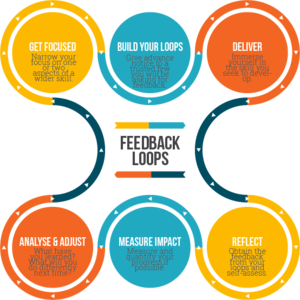Welcoming inductions do not mean your new talent will be onboard with your business strategies and mandates for the role.
There is a vast difference between learning how to use the printer and how to have deep conversations that set the real agendas.
During a recent series of assignments where HFL was assisting a client to select external talent for a new role, we were struck by a disconnect between the investment and effort the client was putting into the recruitment phase (a very robust series of assessments against a specific set of criteria) as opposed to the introduction phase for the successful candidate.
After a recent selection assessment centre, which resulted in the appointment of an external candidate, l asked my client about their onboarding plans for this person - whose extraordinary credentials would be adding exceptional value to the organisation. The response was “of course we will” but the details were left vague.
The usual induction activities were planned of course, but there was not, in our humble opinion, a specific plan for this new employee who was stepping into a key strategic role to be set up for success. The difference, in other words, between induction and onboarding.
Given that the company was committing heavily to the recruitment process, l was very concerned that they would fail to secure the ROI. Onboarding plans are essential to set up any new hire for success – by managing their integration into the culture and helping them navigate the political landscape.
Our client is typical of many large organisations: its complex. They have a changing culture, and they are operating in a highly dynamic market being disrupted by globalisation and new entrants and enormously impacted by technology changes. This type of change also creates a complex political landscape that needs to be effectively navigated – particularly at a senior level.
l again reached out to explore whether there had been any progress on the onboarding plan. My client happily shared the ‘list of activities’ planned for the inductee’s first week.
The clients’ induction plan included the usual list of activities: meetings with direct reports, their manager, some key peers, the IT and HR departments, and so on.
What was clear from this list was that the direct manager did not understand the difference between induction activities and an onboarding plan. The list included things such as ‘spending a lot of time with xx’, setting up meetings to meet peers and direct reports, morning tea, travel to meet team members and key stakeholders in other locations, and induction to office and equipment.
While this orientation program is important in helping the newcomer feel welcomed and valued, it has very definite limitations.
An onboarding schedule, however, addresses the four critical agendas to be understood in order to accelerate a successful transition. These are:
-
The business agenda – current business climate, strategic imperatives, strategy, competitive positioning, developing a framework for aligned KPI’s, identification of quick wins, and future opportunities;
-
The people agenda – getting an early feel for the culture of the existing team, mapping stakeholders and mapping the current status of relationships, current levels of engagement, and capability maps and gaps;
-
The leadership agenda – legacies from past leaders (if appropriate), current leadership brand and fit to what will be required in the role, cultural agenda of the organisation and team, and pace of change; and
-
The self management agenda – establishing insights into their own individual learning intent, and establishing and further developing their own leadership skills for accelerated transition readiness.
At HFL, we are passionate about the process of designing bespoke selection centres and running these for our clients. We are equally passionate about ensuring our clients fulfil the potential of this commitment. To fulfil best practice it is vital to complete the loop with the best onboarding of external talent.
Thoughtful and comprehensive onboarding is a way to close the loop on bespoke selection centres that ensure the right candidate is hired and they are ready to perform and that they can quickly make the important impact the business is seeking. Failure to close this loop has serious consequences.
A research paper from Leader Onboarding, suggests that 64 per cent of leaders hired from outside of the organisation are not successful in their new role – two out of every three. Moreover, according to their study four in ten fail in the first 18 months.
Is the difference between induction and onboarding properly understood and executed effectively in your organisation?




